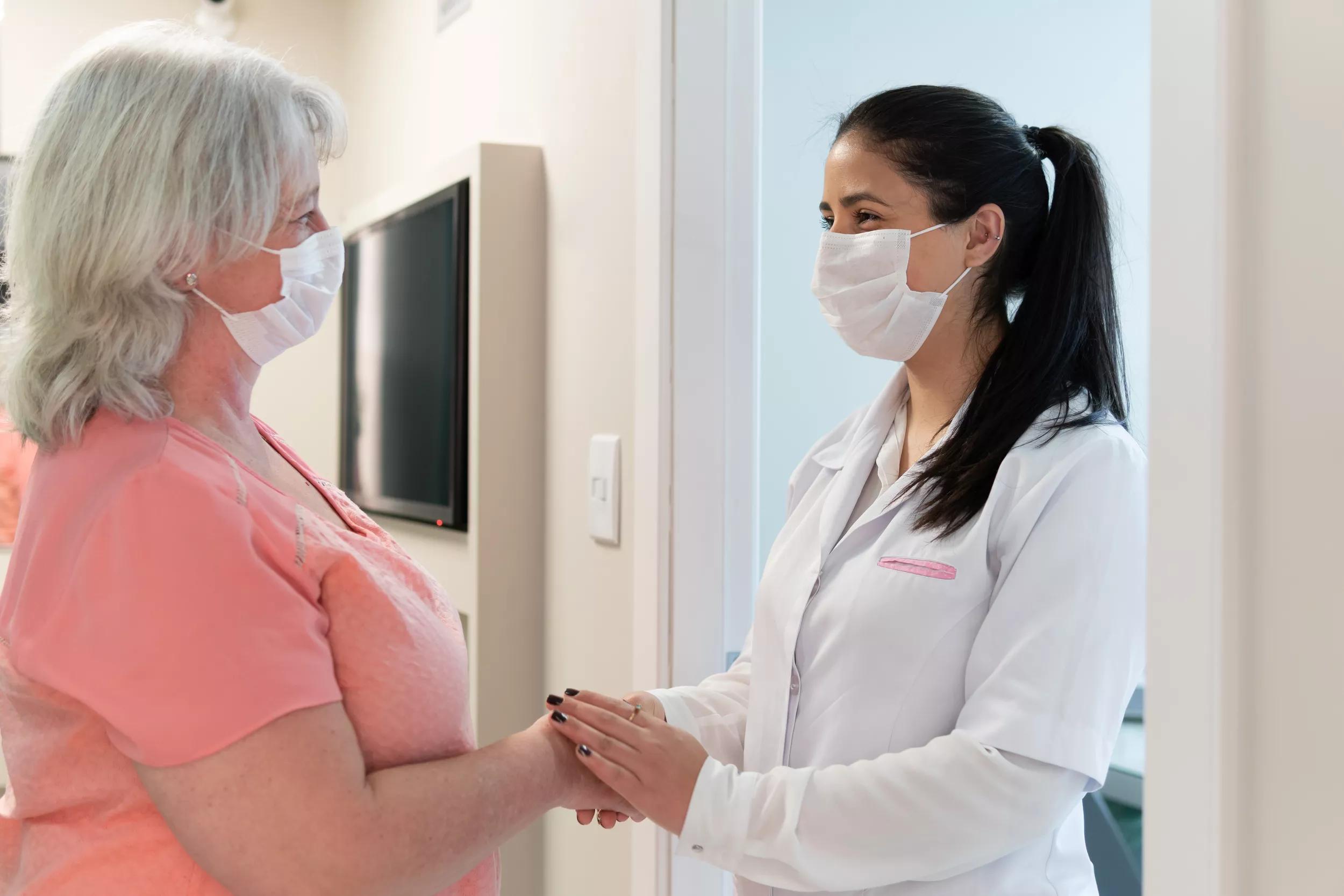We’re wrapping up by going a bit deeper into how the diagnosis leads to further steps in your breast health journey. If this is your first visit to our campaign, you can start here.
From diagnosis to treatment plan
When all the necessary tests have been done, the radiologist has analyzed your breast images, and in some cases the pathologist has checked your biopsy, the doctors can form a diagnosis. The diagnosis is the identification of what they’ve found. It gives the medical team the basis they need to define a treatment plan.
Part of the treatment plan is also an expectation of how the illness is expected to proceed. This is called the prognosis. This could be an example (in not too medical terms):
- the diagnosis could be: ‘a small breast cancer that hasn’t spread’
- the prognosis could be: ‘remove the cancer through surgery but no chemotherapy will be needed afterwards’.

Your doctor or gynecologist will inform you of your diagnosis and discuss the next steps with you.
If the diagnosis is breast cancer, you’ll need to do more tests, for example so the doctors can investigate what its size is, or whether it’s spread to another part of your body. If the cancer was found early, it will be smaller and there’s less chance that this has happened. So early detection and correct diagnosis certainly have their effect on your treatment.
In the meantime, your case will be discussed at a multidisciplinary team meeting or tumor board. Those are meetings in which a lot of medical professionals come together to discuss cancer cases only. Behind the scenes, a whole oncological (specialized in cancer) team is taking care of you as long as is necessary.
You will usually be briefed about the diagnosis and the further steps that need to be taken by your doctor or gynecologist. In case you need to go to the hospital for more tests, there will also be nurses and specialists that guide you through the process. Never hesitate to ask the questions you have!
In a nutshell
Even though your doctor or gynecologist is the person you see most of all, there’s a whole team of medical professionals who each shed their specialized light on your situation – even when no diagnosis has been made yet.

If you've been diagnosed with breast cancer, know that behind your doctor is an entire team of medical specialists bending over your case.
Going to a series of test appointments might be stressful and tiring, but it’s important that your diagnosis is accurate. Because once these explorations have been done and the doctors know what’s going on, they will use the information they have to set up a treatment plan. A good start is half the battle!
But everything starts by keeping up a healthy regular test habit. As we said in the beginning of our campaign: every month is breast cancer awareness month. Go to your regular screening sessions, because they are the best way for early detection and to minimize treatment!



